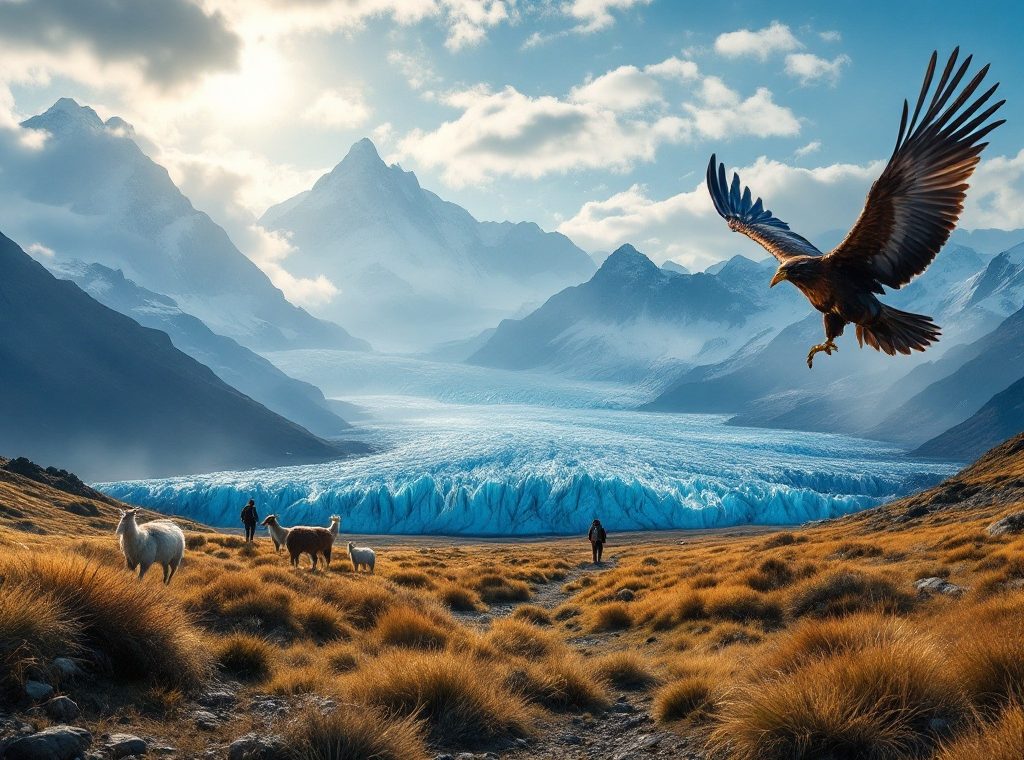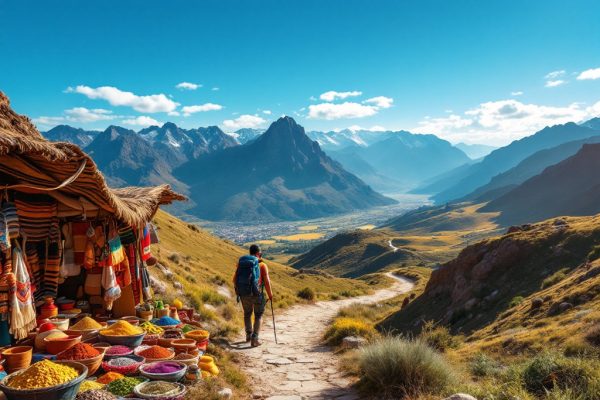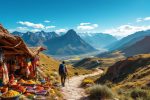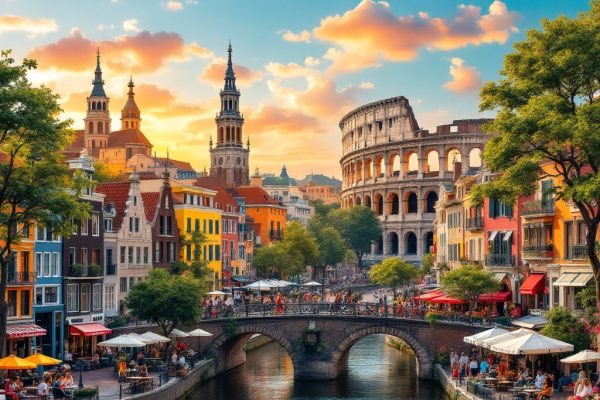What You Should Know Before a Trip to Patagonia
Dream of exploring breathtaking landscapes? Patagonia, nestled at South America’s southern tip, awaits! From the towering Andes to sprawling grasslands, discover a diverse paradise. Hike iconic trails like the W Trek, witness the Perito Moreno Glacier, and encounter unique wildlife. Learn how to prepare for Patagonia’s unpredictable weather and navigate its travel logistics. Start planning your unforgettable adventure today!
Important information
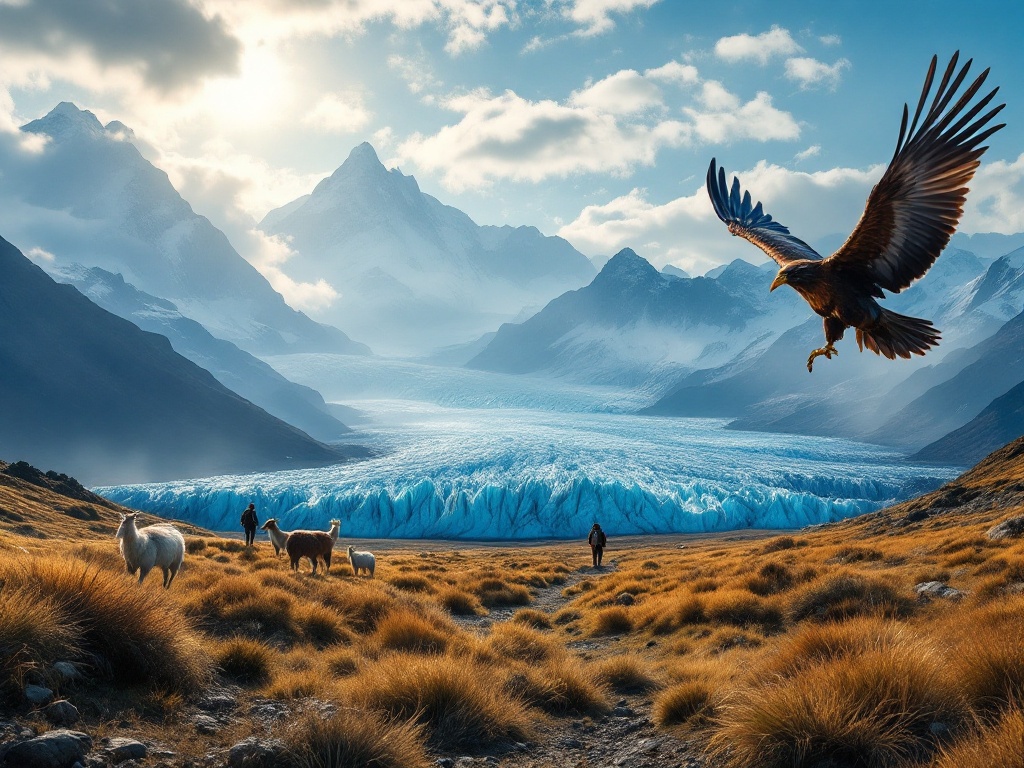
- Patagonia is located in southern Chile and Argentina, offering diverse landscapes from mountains to grasslands.
- The best time to visit is during the shoulder seasons (March-April & October-November) for pleasant weather and fewer crowds.
- Pack layers of clothing, including waterproof and windproof gear, as Patagonia’s weather is unpredictable.
- Hiking boots are essential, and physical fitness is recommended for tackling the varied terrain.
- Respect park regulations and stay on marked trails to protect the fragile ecosystem.
Understanding Patagonia’s Geography
Patagonia, a vast region spanning southern Chile and Argentina, is bordered to the west by the towering Andes Mountains. To the east, the landscape transitions into plateaus and lowlands.
Location and Countries
Patagonia, located at the southern tip of South America, is a land shared by Chile and Argentina. The region is dominated by the towering Andes Mountains. However, Patagonia’s diverse beauty extends beyond its majestic peaks to include deserts, pampas, and sprawling grasslands.
Entry Points: Flying to Patagonia
El Calafate International Airport (FTE) is a primary gateway to Argentina, frequently used by travelers. Punta Arenas Airport (PUQ) serves as a key entry point and major hub for Chile.
Traveling Within: Bus, Hitchhiking, and Backpacking
Patagonia offers various exciting travel options.
Buses
Buses are an affordable way to cover the vast distances and explore the region. They remain the preferred choice for reliable transport.
Hitchhiking
Hitchhiking is a common practice due to the low crime rate and welcoming locals. It provides a unique and immersive experience.
Backpacking is a popular choice for budget-conscious adventurers, relishing the freedom to explore remote areas and hike to breathtaking vistas. This immersive experience allows for a deep connection with Patagonia’s wild beauty.
When to Visit Patagonia
Patagonia truly shines in the shoulder seasons of March to April and October to November. These periods offer distinct advantages, including smaller crowds and potential savings on travel expenses. The generally pleasant weather is ideal for hiking and exploration. However, packing layers is essential to handle Patagonia’s unpredictable conditions. This ensures you’re prepared for whatever weather comes your way.
Best time to visit Patagonia
March to April and October to November are the shoulder seasons in Patagonia. These months are ideal for visiting due to fewer crowds and potential cost savings.
Weather conditions
Pleasant weather is typical during these months, making them perfect for hiking and exploring. However, Patagonia’s weather can be unpredictable, so packing layers is crucial.
Best Time: Shoulder Seasons
Patagonia’s shoulder seasons (March to April and October to November) offer the ideal blend of pleasant weather and fewer crowds. These months provide comfortable temperatures, perfect for hiking and exploring the region’s diverse landscapes. Discover Patagonia’s beauty without the summer rush.
Avoiding Crowds: Summer Travel Considerations
Patagonia’s summer, spanning December through February, is peak season, so booking accommodations and tours well in advance is recommended. To avoid the crowds, consider exploring lesser-known areas and hiking during off-peak times, enhancing your overall experience.
Preparing for Patagonia’s Weather
Patagonia’s weather is famously unpredictable. Sunshine, rain, and strong winds can occur within a single day. Consulting historical weather data for your travel dates will give you an idea of the potential temperature changes and rainfall.
Windy Conditions
Patagonia is known for its intense winds, especially during spring and summer (September to March). However, wind can impact travel and outdoor activities year-round, with higher elevations experiencing even stronger gusts. Secure loose items and wear wind-resistant clothing for a more comfortable experience.
Weather Check
Be prepared for all types of weather. Check the forecast before you go and pack layers of clothing to adjust to changing conditions.
Unpredictable Weather Patterns
Patagonia’s weather is notoriously unpredictable, shifting dramatically from sunshine to gales in a blink. Be prepared for strong winds and fluctuating temperatures by packing layers. A waterproof, windproof outer layer is essential, and warm clothing is a must even during summer months. For the mildest weather and longest days, visit between late spring and early autumn (November to March). However, even then, pack for potential rain and cold snaps, especially if venturing south. Pack these items for your trip to Patagonia:
- a waterproof and windproof outer layer,
- warm clothing (even for summer),
- rain gear,
- layers for fluctuating temperatures.
The best time to visit Patagonia for mild weather is between late spring and early autumn (November to March).
Windy Conditions and Seasons
Patagonia experiences its strongest winds during spring and summer (September to March). These winds can disrupt travel plans, including flights, ferries, and hiking.
Winter (June to August) offers calmer conditions in Patagonia. However, temperatures are significantly colder during this time and require careful preparation.
Travel Documentation and Border Crossings
Traveling between Argentina and Chile requires a valid passport. A visa may also be necessary depending on your citizenship. Confirm your country’s specific visa requirements beforehand. Some nationalities are subject to reciprocity fees upon arrival.Border crossings involve customs inspections. Declare any items you are bringing into either country. Restrictions often apply to agricultural products like produce, plants, and animal-based goods. Cooperating with border officials and having your travel documents readily available will ensure a smooth border crossing experience.
Requirements for Argentina and Chile
Traveling to Argentina or Chile? Ensure your passport is valid throughout your trip. Most tourists enjoy visa-free stays up to 90 days, but confirm specific requirements for your nationality before you go. Some nationalities may face reciprocity fees upon arrival. Keep copies of your passport and travel documents safe.
Customs and Border Officials
Crossing the Chile-Argentina border is typically straightforward, but customs and immigration can cause delays. Therefore, factor in some extra time for these procedures.
Budgeting for Your Patagonia Trip
Patagonia offers diverse travel options, each with varying costs. For flexible exploration, consider a rental car, but be aware of potential high expenses, especially for solo travelers. A significantly more affordable option is the bus system. For shorter trips, taxis or ridesharing services offer convenience. For longer distances, domestic flights within Argentina are generally cheaper than international flights.
Accommodation
Patagonia’s accommodations range from budget-friendly hostels and campsites to luxurious hotels and eco-lodges. While high-end options offer greater comfort, they come with a higher price tag. Booking in advance is recommended, especially during peak season.
Food
Dining out can be expensive. Consider preparing some of your own meals to save money and manage your travel budget effectively.
Transportation Costs: Car Rental vs. Bus Travel
Renting a car offers the freedom to explore at your own pace, but it comes at a premium price. For budget-conscious travelers in Patagonia, buses are a cost-effective way to travel.
Accommodation and Camping Options
Planning a Patagonian adventure? Patagonia offers diverse accommodations for every style and budget. Choose from luxurious hotels, eco-conscious lodges, budget-friendly hostels, and campgrounds. For an immersive experience, consider a traditional estancia. Book accommodations in advance, especially during peak season. Camping is a cost-effective way to explore Patagonia’s stunning landscapes.
Essential Gear for Patagonia Travel
For your Patagonian adventure, sturdy, waterproof hiking boots are a must-have. Break them in well beforehand to prevent blisters. Pair them with moisture-wicking socks for dry, comfortable feet.
Layering for Patagonia’s unpredictable weather
Patagonia’s weather can change rapidly, so layering is essential. Start with lightweight, thermal base layers for warmth.
- Add insulating mid-layers like fleece or down,
- Top it off with a waterproof, windproof shell to protect against the elements.
Essential accessories
- pack a warm hat and gloves,
- a buff or neck gaiter provides added protection from the wind and cold.
Hiking Gear: Boots and Fitness
Sturdy hiking boots are essential for navigating Patagonia’s trails, offering both protection and crucial support for your feet. Physical fitness is also key, as the terrain can be challenging. Proper footwear combined with good physical conditioning will ensure a safe and enjoyable trek, preparing you for any challenge the trails may present. For a successful and comfortable hiking experience in Patagonia, consider these essential preparations:
Gear Up
- Invest in sturdy hiking boots with excellent ankle support, providing stability and protection on uneven terrain.
- Choose moisture-wicking socks to keep your feet dry and prevent blisters, enhancing comfort during long hikes.
- Pack layers of clothing to adapt to changing weather conditions, ensuring you stay comfortable throughout your trek.
Prepare Your Body
- Begin a regular exercise routine several weeks before your trip, focusing on building strength and endurance.
- Incorporate hiking-specific exercises, such as hill climbs and stair stepping, to condition your muscles for the terrain.
- Prioritize proper nutrition and hydration in the days leading up to your hike, ensuring your body is adequately fueled.
Packing for Weather Variability
Packing for Patagonia’s unpredictable weather requires a layered approach. Start with moisture-wicking base layers for comfort. Add insulating mid-layers like fleece or down for warmth. A waterproof and windproof shell is essential for protection against the elements. Sturdy hiking boots and warm socks are crucial for your feet. Don’t forget a hat and gloves for warmth, and sun protection for sunny days. A daypack is recommended for carrying essentials, along with a reusable water bottle and a first-aid kit.
Exploring Patagonia’s Top Destinations
Patagonia’s iconic national parks, like Torres del Paine and Los Glaciares, are must-see destinations. These parks showcase diverse landscapes, from towering granite peaks and massive glaciers to pristine lakes and lush forests. Popular treks, such as the W Trek in Torres del Paine and the Fitz Roy Trek in Los Glaciares, draw adventurers from around the globe. Patagonia’s unique wildlife includes penguins, roaming guanacos, and soaring condors. Charming towns like El Chaltén and Puerto Natales act as gateways to these adventures, offering a variety of accommodations and tours to help you explore Patagonia’s wonders.
Must-Do Activities and Outdoor Adventures
Patagonia’s national parks, like Torres del Paine and Los Glaciares, offer a diverse range of activities for every adventurer. Hikers can explore world-renowned treks such as the W Trek in Torres del Paine and the Laguna de los Tres trek in El Chaltén. Beyond these iconic routes, thrill-seekers can tackle challenging rock climbs or try ice trekking for an unforgettable experience.
For a thrilling adventure:
- Kayaking provides a unique vantage point on the water.
- Mountain biking offers an adrenaline rush through varied terrain.
For a more relaxed experience:
- Horseback riding offers a tranquil way to explore the landscape.
- Wildlife viewing allows you to connect with Patagonia’s unique fauna.
- Fishing provides a peaceful escape amidst stunning scenery.
- Photography enthusiasts can capture the region’s breathtaking beauty.
Visitors can explore stunning glaciers, majestic mountains, and tranquil lakes. During winter, some areas even offer opportunities for skiing and snowboarding.
Popular Treks: Base Towers Trek and More
Torres del Paine National Park in Chile, home to the famous Base Towers Trek, attracts hikers worldwide. A stunning alternative is Argentina’s Fitz Roy Trek. For experienced adventurers, the challenging Huemul Circuit, also in Torres del Paine, offers another exciting option.
National Parks and Wildlife
Patagonia’s national parks offer incredible experiences. In Chile, Torres del Paine National Park showcases breathtaking granite peaks and glaciers carving through the landscape, providing a haven for diverse flora and fauna, including guanacos and pumas. Argentina boasts Los Glaciares National Park, where the Perito Moreno Glacier reigns supreme. Hiking is popular, and boat tours offer spectacular views of ice calving. Further south, at the tip of South America, lies Tierra del Fuego National Park, a dramatic landscape of coastal scenery and forests teeming with seabirds and foxes.
Torres del Paine National Park (Chile)
Breathtaking granite peaks and glaciers. Diverse flora and fauna, including guanacos and pumas.
Los Glaciares National Park (Argentina)
Home to the Perito Moreno Glacier. Popular hiking trails and boat tours offering spectacular views of ice calving.
Tierra del Fuego National Park (Argentina)
Dramatic coastal scenery and forests. Abundant seabirds and foxes.
Each park has specific regulations and entrance fees, so research is essential before your visit. Wildlife viewing is a major attraction, with penguins, whales, and elephant seals frequently sighted. Remember to respect the animals by maintaining a safe distance and enjoying Patagonia’s natural wonders responsibly.
Safety and Regulations in Patagonia
Respect Patagonia’s delicate ecosystem by staying on marked trails and adhering to park regulations. This helps preserve this unique environment. Swimming is restricted to designated areas to protect the sensitive aquatic life, and the region’s important flora and fauna. These rules are essential for their survival.
Park Rules and Trail Etiquette
Stay on marked trails to minimize your environmental impact.
Pack out all trash, including food scraps.
Observe wildlife from a distance and avoid disturbing them.
Keep dogs on leashes where required.
Camp only in designated areas.
Mountain weather is unpredictable, so pack appropriate gear.
Inform someone of your hiking plans.
Be respectful of other hikers by keeping noise levels down.
Swimming Restrictions and Environmental Protection
Swimming is generally prohibited in Patagonia’s lakes to protect the water and its fragile ecosystem, ensuring its purity. This measure helps maintain the pristine condition of the water.

